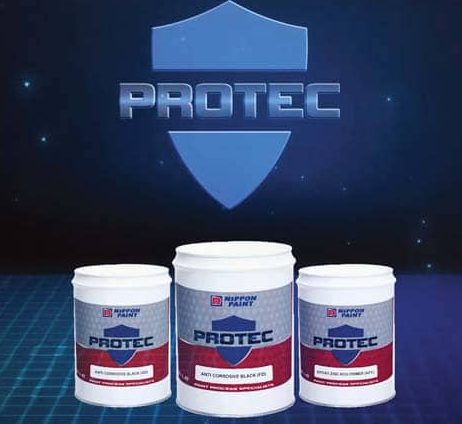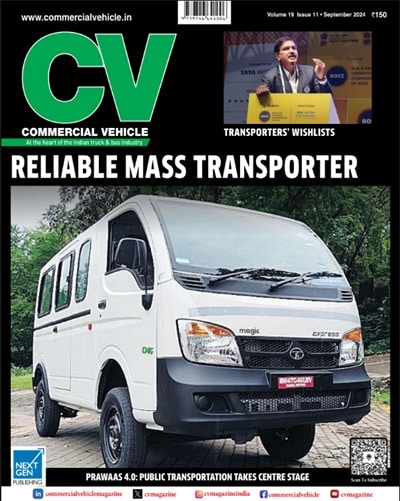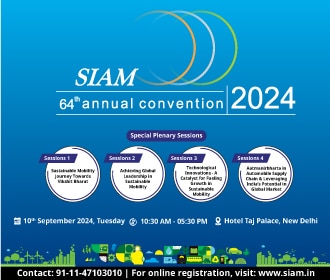In an upfront conversation, Ketan Girap, General Manager, Key Account Business Unit, Nippon Paint India Automotive Refinishes, speaks to Ashish Bhatia on the refurbishing industry as a whole bouncing back.
 Q. At the business end of the FY2022, what is the outlook for automotive coatings across segments from a short to medium-term perspective?
Q. At the business end of the FY2022, what is the outlook for automotive coatings across segments from a short to medium-term perspective?
A. With the Covid-19 situation improving, accompanied by a favourable market scenario across the automotive sector and the government’s thrust to infrastructure and Electric Vehicles (EVs), the market for automotive paints is expected to observe a decent growth in demand. We expect to reach the pre-pandemic levels in terms of business value. From a long-term perspective, we see a lot of positive trends due to various policies such as the new scrap policy and the changing market dynamics. As Covid19 ebbs and normalcy is restored, India’s automotive paints industry is poised to bounce back. As per recent industry estimates the Indian automotive paints and coatings market is expected to grow at a Compounded Average Growth Rate (CAGR) of over 30 per cent during 2021-26.
 Q. Your take on the aftermarket for paint and consumable solutions?
Q. Your take on the aftermarket for paint and consumable solutions?
A. India’s automotive industry has experienced a sharp rise in the sale of used or second-hand vehicles. During the past couple of years, the second-hand market has taken a driver’s seat and is in fact expected to exceed the new car sales in a few years. As per a recent industry report, the used car market in India is expected to reach a volume of a whopping 70 lakh units in 2025-26, from 38 lakh units in 2020-21. This sharp growth across the used vehicle segment will further trigger the growth of automotive paints and consumable solutions as well.
 Q. What is the outlook for industrial coatings for the coming years?
Q. What is the outlook for industrial coatings for the coming years?
A. The ongoing exodus of companies from China provides a once-in-a-lifetime opportunity for developing markets like India to emerge as a major hotspot for investment and for setting up their manufacturing bases. Owing to the availability of cheap labour, land and investment-friendly policies, the industrial segment in the Indian subcontinent is poised to experience an upswing in the coming years. We have already witnessed several companies shifting their base from China to India especially a lot of OEMs and EV manufacturers causing a “ripple effect” across India’s industrial coating market.
Q. What would be the capex earmarked for India/Group level for automotive and transportation segments?
A. Nippon Paint has invested deeply in the Indian market in all paint sectors including decorative, industrial and auto refinish. We are in India for the long term, not only to cater to the domestic market but also to develop exports from India. In this regard, we will be making investments in capacity building, technology and other fields as necessary.
Q. How do you expect to benefit as an ecosystem from the PLI scheme? How do you react to approvals granted under the scheme?
A. The recently introduced Production Linked Incentive (PLI) scheme for the auto sector will play a substantial role in strengthening India’s automotive paints and industrial coatings ecosystem. The scheme will help to de-risk the existing supply chains and will further help India to emerge as a world-class automotive manufacturing base. This will surely have a positive impact on India’s automotive paints and coatings market. This will further help to create a vibrant and competitive ecosystem. The scheme will also help to generate an increased number of employment opportunities for India’s young population giving them an opportunity to learn new skills and become contributing members of the economy. Looking at the ongoing exodus of OEMs from China, the introduction of the PLI scheme has emerged as a great enabler for attracting these OEMs to India, hence turning India into a hotspot for automotive manufacturing. But it will take some time to comprehensively realise the impact of the scheme on the economy and especially on the automotive refurbishing business.
Q. How have you as a company added efficiencies in your supply chain both upstream and downstream?
A. Nippon Paint is closely working with various OEMs and over time we have understood the needs of respective production lines and devised solutions that will help optimise the best-in-class manufacturing process. We are closely working with product managers on the assessment of line plans and thus providing paint and painting solutions that assist with just the right stocking and time deliverable. The overall ecosystem is designed to enable raw material procurement to feed paint production and move them to warehouses which is a feeder to the various end customer production lines and retail outlets.
Q. How is the product portfolio adapting to new trends from light-weighting to e-mobility and new benchmarks being set on fit and finish?
A. Delivering technology-based, green, productive and efficient solutions are the values that have been thoroughly embedded in our DNA here at Nippon Paints, thus our motto of being “Paint Process Specialists”. Being one of Asia’s most reputed automotive refurbishing companies, we always strive to deliver products that are productive/efficient and overall add value to our customers. Here at Nippon Paints, we have an extensive and complete range of products and solutions crafted to fulfil the needs of the customers. Apart from the existing traditional products, our product portfolio includes WoW primers, DTM’s, Fastest drying Clears, and CyGlaz technology which is self-healing and offers a mirror-like finish. Our WoW systems are known throughout the ecosystem for offering higher productivity than the conventional system which in turn saves cost as well as improves productivity. We will soon be launching a DTM system for our customers which will further enhance the overall cost structure, and improve productivity giving a better Return on Investment (RoI) for any organisation.
 Q. In line with these, how are you upskilling your key stakeholders? For instance, the initiatives in Tamil Nadu and Karnataka?
Q. In line with these, how are you upskilling your key stakeholders? For instance, the initiatives in Tamil Nadu and Karnataka?
A. Here at Nippon Paint, we place a high priority on serving the best interests of society and those who are associated with us. Our commitment runs much deeper than simple philanthropy and charity. We firmly believe that skilling and re-skilling those who are associated with us are key towards not only ensuring the organisation’s growth but also the overall growth of the entire painter community. We have incorporated several programs to address this and one such example is the SEN program, which is a pan-India program targeted toward enhancing the living standard of our painter community. We were the first automotive company in India that initiated a program solely dedicated to the uplifting of painters by providing them with better growth opportunities. We are also planning to launch initiatives that are focused on generating funding opportunities for the painters so that they can move up the value chain by opening up their own garages. Upskilling them by introducing better products which would not only help to make their jobs more streamlined but will also help to increase their overall income.
Q. A word on the industry-academia collaboration concerning R&D initiatives at the Group/company level.
A. We are exploring such potential tie-ups with reputed academic institutions. Our R&D centre in Manesar is a global facility and focused on various key international projects. Developing synergistic ties with the scientific community and academia in India is part of our plan.
Q. How far have you come on the cradle-to-cradle approach to sustainable development?
A. We are walking the talk on sustainability. As we enter 2022, we at Nippon Paint are setting new goals to build a more sustainable business while keeping our customers at the core of everything we do. With ever-increasing environmental awareness, Nippon Paint is proud to take on the responsibility of being environmentally friendly. We have recorded major achievements in cutting down pollution, reducing energy consumption and minimising waste. Nippon Paint stays committed to the protection of the environment in every step it takes − from product development and manufacturing to work procedures. In terms of coatings, we are championing the concept of ‘Green Efficiency’. Coatings that are green don’t have to be less efficient. With this concept in mind, we are promoting our waterborne paint along with low VOC series of ancillary products and offering it to more and more customers.
Q. How have you tackled the commodity price hikes and balanced them with the need for stricter compliances that add to Opex?
A.We have tried to tackle the commodity price hikes by accelerating our efforts to localise supply chains, developing new product formulations and using alternative raw materials. Only when no other choice remains do we resort to price increases. Our margins are under tremendous pressure, and we naturally keep stronger control over our overheads. The pandemic has taught us a lot and we remain committed to being frugal, agile and lean.
Q. To sum up, what are your growth areas and challenge areas for the foreseeable future?
A. Covid19 is arguably one of the biggest challenges for the industry so far owing to its unpredictable nature. Except for the significant downfall in the sales of automobiles due to semiconductor shortage supply-related constraints are also a significant hurdle within the growth trajectory of India’s automotive refurbishing industry. But the good news is the overall rise in middle-class income and young population accompanied by positive policy interventions such as the PLI scheme, scrappage scheme etc. and the increased adoption of EV vehicles, India’s automotive refurbishing industry is poised to flourish in the coming years.





























